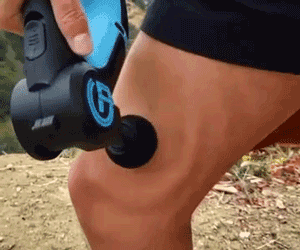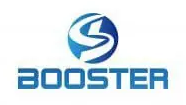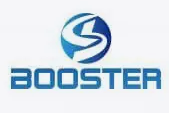What Is Percussive Therapy Massage?
Percussive therapy is one of the latest discoveries for sports recovery. The massage gun provides accelerated bursts of pressure into the tissues of the body. This action helps release muscle knots which are the primary suspects for back and shoulder pain. What’s more, it can reach even deeper layers of muscles than a foam roller or human hands.
Unlike in traditional massage, percussive therapy desensitizes the surrounding area of your aching muscle until the pulses penetrate the target area. It reduces the unbearable pain that we tend to experience when the therapist applies too much pressure on our sore muscle. It’s like enjoying the benefits of a deep tissue massage sans the pain. Who wouldn’t want that?

Studies show that percussive therapy offers a number of benefits.
Because of the increasing popularity of massage guns and the growing number of people who keep on asking, “How does percussive therapy work? Is it really practical?”, many health and fitness experts conducted studies regarding its effectiveness. Such studies indicate that the taps and thumps of this sports recovery device can be beneficial for your body in many ways:
1. It prevents Delayed Onset Muscle Soreness (DOMS).
DOMS happens when you engage in a physical activity that stresses your muscles beyond their usual limit. It’s annoying, dreadful, and could last for 24 to 72 hours after your workout. Good thing, percussive therapy could give you a fast remedy.

According to a 2014 study published in the Journal of Clinical & Diagnostic Research, vibration therapy, “improves muscular strength, power development, and kinesthetic awareness.” It also, “effectively improves muscle performance which may prevent DOMS.”
While vibration therapy and percussive therapy are two different forms of treatment (vibration therapy uses, well, vibration; whereas percussive therapy involves thumping or hammering motions in addition to vibration), their mechanisms are the same.
The vibration causes a motor unit activity that blocks off any muscular damage caused by an eccentric workout. It also reduces the body’s perception of pain by disrupting the pain signals that the brain sends to your body. Thanks to percussive therapy, you don’t have to endure any post-workout pain and stiffness anymore.
2. It improves flexibility.
The same study explains that aside from pain reduction, the vibration also synchronizes your muscle spindles which results in a better range of motion. Once muscles become flexible, they won’t be as prone to injuries and pains as they were before. Your flexibility will also improve your posture and balance. Sweet!
3. It increases blood circulation.
Overtraining causes severe muscle pain—we all know that. But did you know that it’s because lactic acid builds up in your muscles whenever you do an intense workout? This effect can be countered by increasing blood circulation, and studies published in 2011 and 2014 pointed out that vibration therapy helps increase blood flow. In sports recovery, the increase in blood circulation minimizes muscle tension and inflammation.
4. It gives way to a better lymphatic flow.
Fewer muscle knots and muscle tightness means better drainage in the lymphatic system. When the lymph moves freely, the body can excrete toxins and waste effectively. A better lymphatic system means a healthier immune system and improved metabolism. Talk about positive chain reaction, right?
5. It offers quick relief to muscle soreness.
This is probably the highlight of it all—it’s fast and effective. Proponents of the 2014 study which compared the effect of vibration therapy and massage in preventing DOMS suggested that, “The difference in time taken for the execution of the treatment can play a pivotal role. situations where time is the essence, vibration can be used.”
Since massage guns are portable sports recovery, you can literally enjoy it whenever you want. At the gym right after work-out, on the sidelines during a time-out, or at home late at night—it’s available to you 24/7. All you have to do is turn it on, target your sore area, and relax. Percussive therapy got you covered.
As if the above-mentioned benefits were not yet enough, a few pieces of research reveal that vibration therapy can also improve the muscle strength of adults, activate bone formation, enhance bone strength, and even decrease muscle tremors which can be beneficial to people with Parkinson’s disease.
It expedites the rehabilitation process of muscles that suffered from trauma, disease, or surgery. Massage guns are also considered helpful in aiding insomnia, curtailing stress, and surprise surprise—reducing cellulite! Now that’s revolutionary work right there.
Is Percussive Therapy Massage Right for You?
After learning all its benefits, here comes the big question: Is percussive therapy right for you?
Percussive therapy is for anyone who has an active lifestyle—professional athletes, CrossFitters, gym buffs, and people who just want to push themselves beyond their limit by recovering fast. Specifically, massage guns are best to use when you are experiencing the following common injuries:
- Muscle Soreness
- Sciatica
- Shin Splints
- Muscle cramps and spasms
- Carpal Tunnel Syndrome
- Herniated or Bulging Discs
- TMJ Syndrome
Some athletes also use massage guns during warm-up to “wake-up” the muscles or prepare their body for work-out. But like other treatments, it is wise to consult your doctor first before using a percussive therapy gun, especially if you have existing medical conditions.
People who fall under these categories are highly-encouraged to seek medical advice before considering percussive therapy:
- Those who have inflammation-related injuries
- People who are taking blood thinners such as warfarin and heparin
- Individuals who have a muscle strain, sprain, fractures, varicose veins, high blood pressure, osteoporosis, osteoarthritis, and conditions that can affect the blood vessels such as peripheral artery disease, thrombosis, etc.,
Although it may seem like percussive therapy only works for people who are in perfect shape, that’s not necessarily the case.
For example, if you are suffering from a shoulder strain, you can still use your percussive therapy gun to treat other areas on your body that may have sore muscles. You can also adjust the settings so you can use it comfortably. Just remember to use it with caution and with proper guidance.
Are you too exhausted to go out for a massage after training? Try a deep tissue massage gun.
If ever you have already experienced getting a massage (which many people would have), you’ll agree that it’s a totally life-changing experience. As your massage therapist kneads your aching muscles, you can feel the pain easing away immediately.
Now, imagine experiencing this kind of relief anytime you want, anywhere you are. Ain’t that cool? That’s the reason why percussive therapy is trending nowadays. It offers the same benefit as that of a traditional massage less the expense and the hassle of visiting a therapist. It involves using handheld devices called massage guns.
A deep tissue massage gun is a high-intensity device that can aid in muscle recovery. While massage guns are designed for anyone’s use, they are most popular among professional athletes and trainers. Percussive therapy is the best option for people who want quick relief for sore muscles.
Fast, convenient, claims to be effective—sounds like a perfect hoax, right?
No. Despite being a recent innovation, percussive therapy proves that it’s more than just a hype. And there are a number of studies to back it up.
Let’s drill into the details.
How to Use a Deep Tissue Massage Gun for Percussive Therapy Massage
One advantage of a massage gun is that it’s very user-friendly. Basically, you just need to turn it on, point it at your target area, and let it do its job. But to maximize its potential, Josh Orendorf, a doctor of physical therapy and certified personal trainer, shares a few tips on how to use a massage gun on your own:
Start low, start slow.
Massage guns are powerful devices so it’s best to take caution. It could be painful if you start out on high without assessing your tolerance level yet. Remember: higher pressure does not necessarily mean a better massage. The key to enjoying the benefits of percussive therapy is to apply the right amount of pressure at the right place. “I start all my athletes on the lowest setting and increase from there,” says Orendorf.
Let it “float.”
Regardless of your preferred pressure, it’s advisable to let the massage gun float on your muscle area. You don’t have to force the massage head on the body. Just glide it over your sore muscle and move it slowly.
Yes, move it.
Orendorf advises, “Make sure you’re not pressing too hard or staying in one spot for too long.“ You can easily create more harm than good. Keep the gun moving for the best results.”
While moving it, make a conscious effort to steer clear of the bone. Start on the larger muscle groups until you get used to the device.
Dr. John Rusin, a physical therapist and performance coach, explains, “People find areas that hurt and think that means they need to stay on them. They may be running over a bony prominence or a vein-artery nerve bundle.” And like other overdone massages, this could be damaging in the long run.
Relax.
It’s a therapy, remember? Being too tense will make your muscles reject the device and hamper the effectiveness of the treatment. Just take deep breaths and feel your muscle pain go away.
Check out what people review about our massage gun here!


